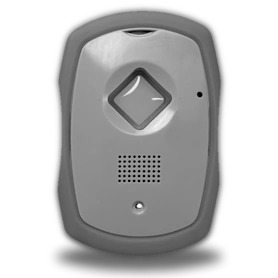Keeping Safe: How To Recognize Symptoms Before A Seizure
Epileptic seizures often occur without warning, but many individuals experience pre-seizure signs that can be empowering to recognize. Living with seizures is a terrifying experience and for several patients, there is a time frame before a seizure hits.
These symptoms may be in the form of a warning-like aura which consists of mild emotional, sensory, or motor symptoms, signaling a seizure event. By understanding the symptoms before a seizure, individuals can prioritize safety and manage it effectively.
Life Assure Product Quiz
Find The Perfect Medical Alert Device
Take our 30 second quiz and discover
which Life Assure medical alert device
is the right fit for you or a loved one.
Life Assure Product Quiz
Find The Perfect Medical Alert Device
Take our 30 second quiz and discover
which Life Assure medical alert device
is the right fit for you or a loved one.
Recognizing Pre-Seizure Symptoms: Identifying the Warning Signs

Here are some of the warning signs one should look at:
1. Prodromal Warning Signs
Not all patients who suffer from seizures are privileged to have preliminary symptoms that alert them of the incident. However, the individuals who can experience it will have some changes in mood and behavior before a seizure event, referred to as the prodrome phase.
This prodrome could happen before the actual seizure episode, and could also take minutes, hours, or days.
Prodromal, and can manifest in feelings of nervousness, confusion, anxiety, crankiness, and difficulty concentrating. Failure to realize that such changes are mere signs of stress often contributes to the problem going unnoticed.
However, it is recommended that you keep a seizure diary and jot down any regular patterns that occur before the seizure such as a change in mood or behavior can help in your identification of your warning symptoms before a seizure.
This might allow for measures to be taken to prevent the seizure or make the person seek help, which would again help with better seizure control.
2. The Sensory Disturbances Preceding Certain Seizures
An aura is a short-lived warning or prodrome that precedes a seizure and may involve any kind of sensation except for the ones involving the five basic senses.
Occurring in as many as 30% of patients with seizures, auras may be experienced in the following ways based on the cerebral zone responsible for the seizure.
Visuals are the most frequent and involve colored flashes of light, illusions, or disturbances in the perception of vision. Some people may have auditory symptoms before a seizure, with ringing in the ears, sound disturbances, or a change in perception regarding loud sounds.
A few people say that they feel different such as the electric shock or numbness that occurs in certain parts of the body; some describe sour or rotten smell or taste they would not experience ordinarily.
An aura may last for a few seconds or several minutes and any bouts and/ or occurrences of an aura can act as a preliminary warning in the occurrence of a seizure.
Knowing your body's energy makes it easier to protect yourself from possible harm, and may even cause harm during the occurrence of the seizure.
3. Autonomic Symptoms
Hypo and Hypertensive attacks can cause disturbances in the ANS, the sub-cortical control system, coordinating the heart’s rhythm or digestion, for instance. This may, in turn, manifest itself as different early warning signs of an oncoming seizure.
Autonomic instabilities are amongst the most frequently reported; these are irregular heartbeat rates (tachycardia or low pulse rate), alterations in breathing rhythms (abnormally high or low breathing), and gastrointestinal discomfort (nausea, vomiting, or ulceration).
Also, headaches, visual disturbances, emotional liability, feelings of nervousness, giddiness, and in some cases, intense sweating, chills, or flushing may occur in this pre-ictal phase.
Although such symptoms before a seizure may be an indication of ordinary sickness or stress, the identification is important to find out that they may be indicative of a possible seizure.
4. Understanding Your Unique Pre-Seizure Indicators
Not all patients exhibiting pre-seizure warning signs followed the detailed methods illustrated
These are signals that involve changes in mood, distinctive sensations (auras), or the occurrence of symptoms of at least one element of the autonomic nervous system, and may significantly differ from individual to individual.
It is advised to write down the time when any signs and symptoms before the seizure is experienced, as well as the time of seizure, and the duration of the symptom so that a proper warning system for a person can be set up.
This enhanced consciousness allows you to act play a role in preventing a seizure, if possible, or to seek help before a seizure happens, which in effect lessens the chances of having a severe seizure and consequently enhances seizure control.
5. The Role of Electroencephalogram (EEG) in Identifying Pre-Seizure Activity
Signs of onset can be challenging to detect, although, warning signs before the seizures may not always be present or realized. In such situations, an EEG is a common study employed by neurologists to determine the likelihood of ongoing seizures.
In a study done by the Americans Academy of Neurology, EEG was defined as a test that measures electrical activity in the brain using electrodes to attach to a scalp.
In some cases, for instance, during an EEG recording, a point of time before a seizure shows abnormally electrical activity even though the person does not have subjective aura symptoms.
Techniques for Proactive Seizure Recognition
This may include preserving a record of partial seizures as was earlier described, and other procedures. Exactly on the list, there is a statement that seems some patients prefer to oversee their sleep and stress which might trigger seizures.
In addition, some of the applications created for the smart operating system mentioned above offer ways to monitor such objective changes, for example, HRV, which may show symptoms of a progressively higher risk of seizures.
When to Seek Emergency Medical Attention

In a situation where the person experiencing a seizure has complications such as breathing problems, having fallen and gotten injuries, or seems confused or unconscious when the seizure is over, they should be taken to the emergency.
This is especially important if the person has never had a seizure or if the seizure appears to be different from previous seizures, or concerns that they had before, they should call emergency services at the same thing or dial 911.
Another crucial sign that shows it is time to seek medical help is the following signs, and if you take timely action, the person will get the right medical care during an episode of a life-threatening seizure.
Conclusion
Coping with fear is difficult, but knowing & recognizing a pre-seizure symptom allows the individual to prevent a safety hazard.
Identifying individual warning symptoms before the seizure, using individual seizure detection measures, and preparing collective seizure action plans can help better seizure management and health overall.











 Get Help With The Push Of A Button
Get Help With The Push Of A Button















